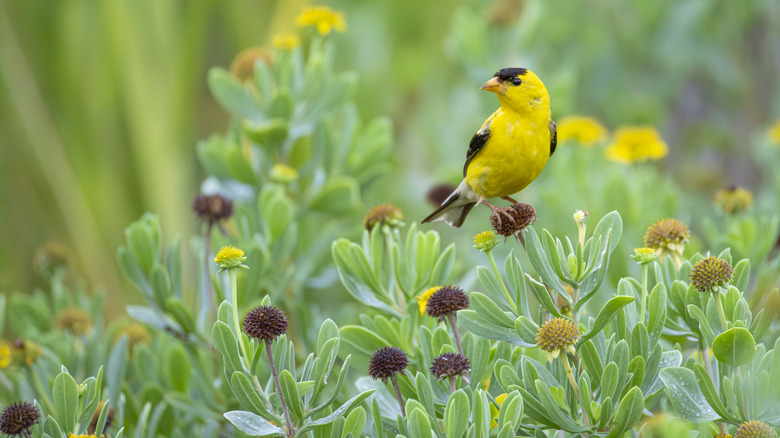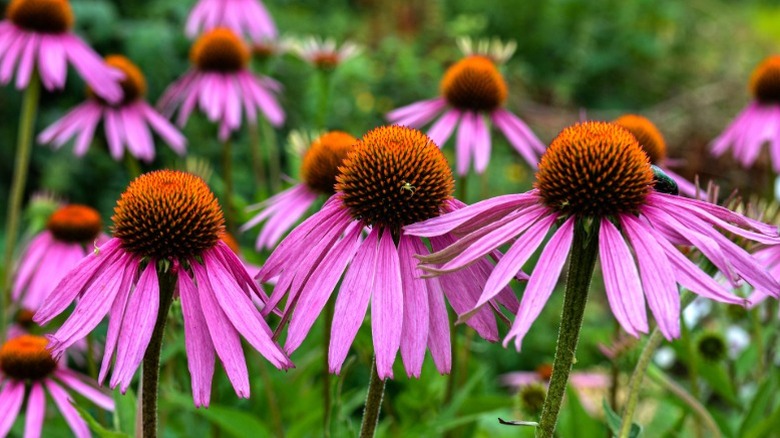The Colorful Self-Seeding Perennial Plant That Can Help Attract Goldfinches To Your Yard
Imagine flowers that plant themselves and lure goldfinches to your garden with no extra effort required. Purple coneflowers (Echinacea purpurea) are easy wildflowers you can grow in your garden to add color and draw wildlife. These vibrant perennials reward you with tall, daisy-like blooms. Then, as the season fades, their sturdy, cone-shaped centers remain, offering visual interest and a feast for visiting birds.
These purple flowers are herbaceous perennials in the daisy family and are native to the eastern and central regions of the United States. Their mounded, brown seed heads are loaded with food the birds rely on from late summer into fall, and even well into winter. Goldfinches are drawn not just to the seeds themselves, but to the open structure of the flower, which makes it easy to perch and feed, turning each bloom into a tiny bird buffet.
Purple coneflowers often self-sow, quietly reseeding nearby soil to pop up on their own with little effort. Their natural charm, coupled with the soft hum of pollinators and the playful flitting of finches, makes them a truly dynamic addition to the garden. From their striking blooms to their wildlife-friendly appeal, these iconic perennials bring both beauty and life wherever they grow.
Adding coneflowers to your garden
Purple coneflowers aren't just pretty; they're easygoing too. Purple coneflowers thrive in USDA Hardiness Zones 3 through 8, making them a reliable choice for much of the country. These tall flowers flourish in sunny spots but don't mind a little afternoon shade, and once they settle in, a heat wave or dry spell won't faze them. Just steer clear of salty coastal soil, and they'll pay you back with sturdy, upright blooms year after year. They don't have a taste for fertilizer, another plus. These garden-friendly perennials can reach about 4 feet in height and spread nearly 2 feet wide, creating a bold, textured presence in any flower bed. Give them a little space to breathe so their leaves stay dry, and you'll keep disease at bay.
Caring for purple coneflowers is easier than you might think. To enjoy blooms later in the season or keep plants more compact, trim about a foot off a few stems when flowers first appear. For a naturally varied display, trim just a few stems at a time instead of cutting them all at once. This gives some flowers a slightly later bloom and a mix of heights. When colder weather hits, lightly mulch your coneflowers and, after frost, cut stems back to the soil. Need to divide or move them? Spring or fall is the perfect time.
Hold off on deadheading until late winter so goldfinches and other birds can enjoy the seeds. If you spot soldier beetles, which look a bit like wasps, let them be — they're harmless pollinators. Japanese beetles and occasional leaf spot, on the other hand, can harm the plants, and the flowers are also susceptible to aster yellows disease. Fortunately, some cultivars show resistance to phytophthora, a water mold that can harm plants.

